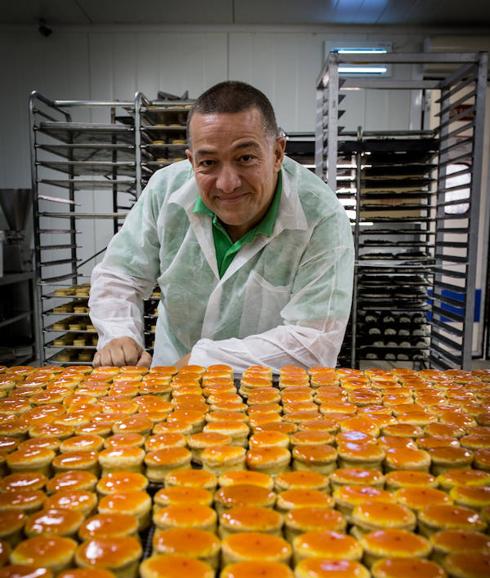

Sections
Highlight

Esperanza Peláez
Friday, 22 September 2017, 17:20
Compartir
When Manuel Ruiz started in his family business, working at Confitería Tejeros, he was filled with youthful enthusiasm.
One of his aspirations was to be put in charge of the 'locas', a hard cake with custard filling and distinctive orange icing on the top.
Today they represent 15% of the total production of the business which sells between 30 and 35% of its products outside of the province.
On any given day, a baker at Tejeros can make over 2,000 locas of different sizes. The loquita is a small version and is a big seller. The classic and the tortas locas are ordered more for birthdays.
Its not just the bakers and bread shops that we supply who ask us for these, but also parties, weddings and restaurants order them from us. What amazes me is the younger generation, who wont remember them, also love them explained Manuel.
His mother, María Jesús reminds him from time to time, that it was her that brought the recipe into the family business when she and her husband, José Ruiz, opened their first bakery, in Calle Tejeros in the La Victoria district of Malaga.
María, often called María Tejeros, had been working with Eduardo Rubio Cao from Barcelona. He arrived in Malaga in 1950 to play for the CD Malaga football team. In those days footballers didnt earn anything near what they can earn now so Eduardo, who was a baker by trade, opened the Charcutería y Confitería Rubio (in those days cooked meats and pastries were sold in the same shop) in the Alameda Principal.
Eduardo Rubio loved to experiment and he decided to fill two discs of puff pastry with crème pâtissière and coat them with icing adding a cherry-red dot on the top. Locas were born although they were originally called locos after a song by Luisa Linares and the Galindos called A lo loco se vive mejor.
The majority of cakes at the time were tortas and people started calling them tortas locas which gradually became locas added Manuel.
The loca was copied across the province. In Alhaurín el Grande, Pepe Guzmán, who took his first steps in Eduardos bakery, went to the capital to meet other bakers and learn new techniques. He made the little pastry cake popular under the name tortas de Guzmán. They didnt have a red dot on the top.
The loca was a cake of its time, durable and not expensive. What happened was that my father had trouble putting the red dot on the top as it would go white under the glaze so he started leaving it off explained Pepes son.
The tortas de Guzmán continue to be made by José Miguel Pasteleros and by Pastelería Guzmán, both bakers run by the sons of Pepe Guzmán.
To make a loca took 24 hours as the layers of icing, which was made by hand, had to dry. It required four people stirring continuously for hours, as the icing had to be put on hot, and burnt easily, he remembered.
In the end, something had to be altered so that nothing about the cake would change, and the icing was made easier to apply and less hard work to make.
Interestingly, the icing has never contained egg yolk but an orange dye that is known in the trade as bumor.
My father, explained José Miguel Guzmán, decided that the colour brought a bit of happiness.
"In reality it was the colour that made the pastry so attractive.
Publicidad
Publicidad
Publicidad
Publicidad
Reporta un error en esta noticia
Necesitas ser suscriptor para poder votar.